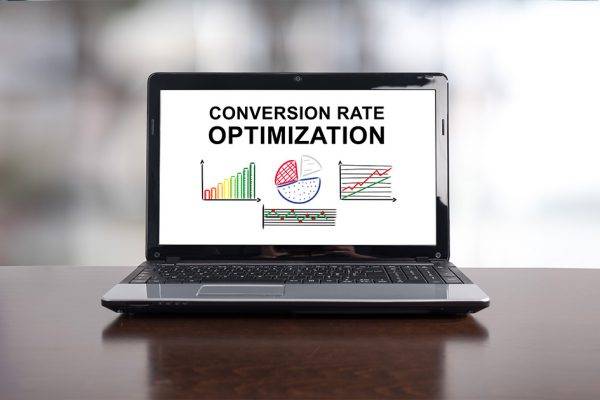Why is my website not converting?

So you’ve got a website – great! A website is meant to drive visitors, give you new leads, and increase sales. But what if it isn’t converting? You’ll surely want to know why it isn’t! The most common reasons come down to design, content, and usability. In this article, we’ll break down a few key areas that can contribute to why your website isn’t converting as you hoped.
What are your goals?
It’s easy to get a website these days as there are tons of options from do-it-yourself to custom-built like the websites we do here at Back9. But there’s a lot more to it than just getting online. You’ve got to have goals. What do you want to achieve with your website? Do you want sales leads, to sell more products, or to educate? Whatever your goal is, it needs to be S.M.A.R.T; Specific, Measurable, Attainable, Relevant, and Time-bound. By planning your goals out ahead of time, you’ll know if your website is doing what it’s supposed to–or if it needs some work. If you want some help creating these types of goals, take a look at our SMART Goals Template–it can help you get started!
Get a FREE S.M.A.R.T. Goal template
Just pop your email in and hit submit and voila! We’ll redirect you to the template
Review and update your goals over time
An important part of goal setting is to review your goals regularly to see how they’re going. Did you achieve them? If not, how come? Were they too ambitious? Or is there something wrong with your website? If you can’t see any reason why you didn’t quite meet your goals, it might be time to review your website for a few key things.
Great design is key
We’ve written about this topic many times but we can’t stress it enough. If you have a well-designed website that is user-friendly and visually appealing, your website is more likely to convert.
A lot goes into the design of your website. It’s more than just looking pretty. It has to be intuitive and easy to use too. One thing strongly believe in at Back9 is growth-driven design. In this way of thinking, your website is constantly growing and improving. Digital technology is one of the fastest-changing industries there is. But with growth-driven design, when something changes, you’ll be ready to adapt quickly!
Too many options
Something that we often see is a “more is more” approach but unfortunately, this could be another reason why your website isn’t converting. If your potential customers have too many options, it can be overwhelming. For example: the main navigation (home, about, services, etc), and then underneath that you’ve got sub-categories for your services and then you’ve got a product banner with a few buttons that users can click – am I painting a clear picture for you?! It’s too much!
It might seem counterintuitive, but in good design, less is more. Fewer options is often better because, let’s not forget, the average user is very savvy. We don’t need to over-complicate their experience or underestimate their abilities to navigate a website. Finding the right balance is essential. The design should help guide users to other parts of the website, but not overwhelm them with decision paralysis.
Review your website content
Are you producing content that helps your customers or answers those burning questions about your business or service? More than likely you’ve answered no to that question and that’s fine, we know how hard it can be to take the time to produce internal content that is interesting and informative for your potential customers. If you can invest in Inbound Marketing your business will reap the benefits and you will attract the right sort of customers. Educating your customers before you’ve ever interacted with them helps you build trust and it is also a huge time saver for your organization. Find out more about why this is important in our article, 9 reasons why you should educate your buyer.
There’s no clear conversion path
If you have a good design and educational content and your website still isn’t converting, what gives? You might be giving users a lot of information, but what do they do with it? What’s the next step? You need to tell visitors what they need to do next. On almost every page you’ll want a call-to-action (CTA). This will tell someone what you want them to do next and then an easy way for them to do it.
For example: you write an article and at the end of that article, you have a message to book a meeting, or to buy now, or get a free quote. Then you have a link or a button that goes to a calendar, or your shop page, or the contact form. If you don’t have a CTA on a page you might lose some leads on that page instead of moving forward. You might even direct them to the next article in a series and have your contact CTA at the final one. Whatever your goal, make it as easy as you can to achieve it!
My website’s broken, now what?
If failure to plan is planning to fail, overlooking testing is sure to get you overlooked. Yup, you need to test and test and test your website. Remember that people are using different web browsers, different mobile devices and your website can have glitches across these different platforms. We also use/interact with websites differently, that’s the beauty of being human but it also means that just because you as the business owner do it one way and it works, doesn’t mean that it works another way for your customer. Often we see websites being launched without proper testing and wouldn’t you rather find out that your ‘Learn More’ button doesn’t work than your customer? It can have a massive impact on the trust level a customer has for you if there are issues and bugs with your website.
Follow best practices to get your website converting
As you can see, there are a lot of things to do with your website. If your website isn’t converting, it could be one or several of these things that need fixed. But how can you tell? Reviewing data like Google Analytics can be helpful, but it takes some practice to understand what to look for. Something else that can help is to regularly audit your website.
This can be done internally but we recommend an external provider as a fresh set of eyes will provide the most insight and constructive feedback. It can also be quite hard to look at your own business subjectively and truly put yourself in your customers’ shoes. A website audit will review your website design, user experience, content, ranking on Google, data in Google Analytics, and more. Once you’ve had an audit, you have real data that can help to improve your website and start converting.
There are several places where you can get a website audit, but we can do one for you for free here at Back9. This will include an analysis of your site and where you can make improvements. Or you might find the site is doing well already! Interested? Click the button below and fill out the quick form to get your free website audit.





